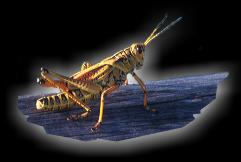Latvia
Matryoshka Dolls
 |
t's hard to find a symbol of Russia more popular than the traditional Russian nesting doll. These decorated wooden dolls "with a secret" are also called matryoshka dolls or babushka dolls. They are recognized even in the countries thousand miles away from Russia. Taking a Russian nesting doll back home is a must among tourists from Europe and the United States alike.
Some historians of Russian life argue that matryoshka dolls originated from Japanese traditional dolls. However it's known that Russian masters would make hollow detachable Easter eggs from the wood long before the first nesting doll was made. The first Russian nesting doll set appeared in Moscow in 1890's. It was carved by Vasily Zvyozdochkin from a design by a folk crafts painter Sergey Malyutin. The doll set consisted of eight dolls of decreasing sizes placed one inside the other. All eight dolls depicted children -- the outermost was a girl holding a rooster, six inner dolls were girls, the fifth doll was a boy, and the innermost was a baby.
Despite the fact that first matryoshka dolls were intended for children, their price was so high that only adults could afford to buy them on special occasions. Matryoshka dolls were often given as a present to young women from their beloved ones. In 1900, the dolls earned a bronze medal at the World Exhibition in Paris. Soon after, Russian nesting dolls became wildly popular.
It takes a lot of skill to make a Russian nesting doll set. Traditionally, matryoshka dolls were made from linden or birch and their production would involve the participation of the whole family. The dolls of the cylindrical form were painted in different ways: it could be a peasant girl dressed in a sarafan and a headscarf, a man or a child. Matryoshka dolls are often painted holding a basket of berries, bread, or a bunch of flowers in their hands.
The production process would begin with the smallest, innermost doll that was lathed from a single piece of wood and wouldn't separate as opposed to the larger figures. The number of nested dolls in a set could vary from two to sixty however a classic set normally included five nested figures. The carved dolls were covered with special glue to fill the cracks and reduce the roughness, after which the dolls were painted to follow a particular theme.
Today, the same process is used in for hand-made nesting dolls some Russian villages. The nesting dolls can be painted to follow the traditional theme or any other style, including fairy tales characters, animals, famous political leaders, historical figures, musicians and popular movie stars.
